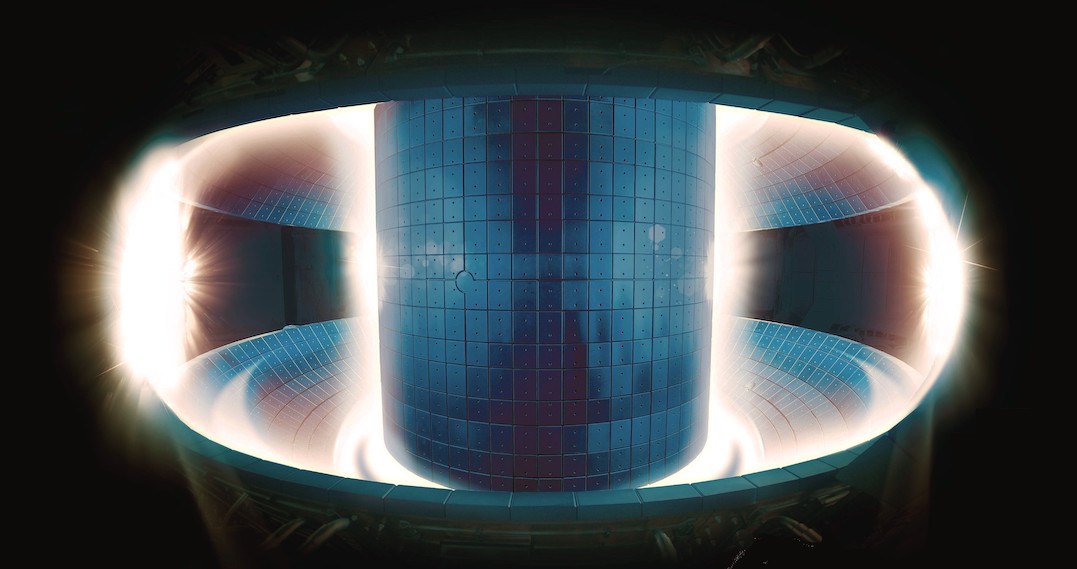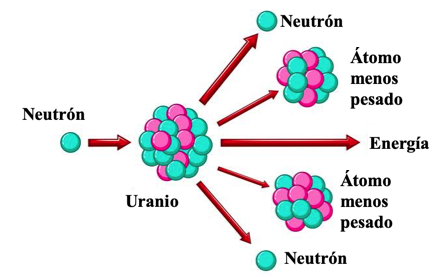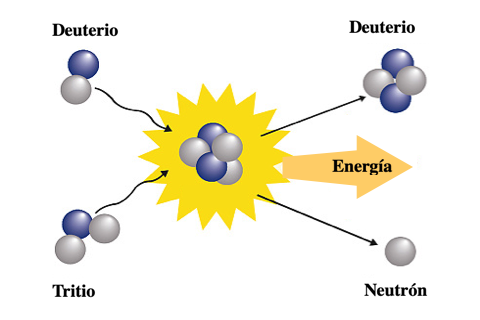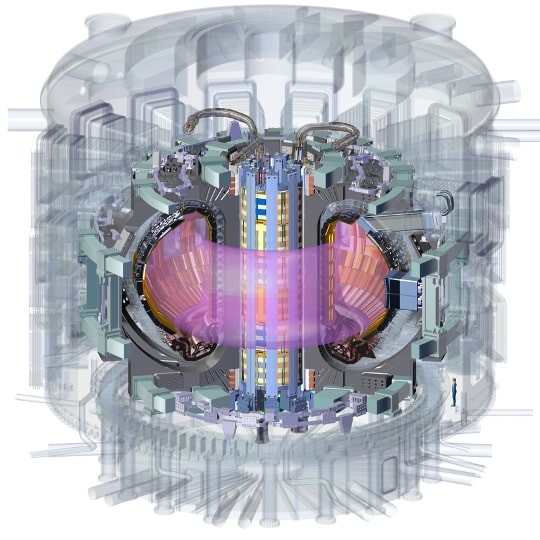
SCIENCE COOKIES
Science articles with chocolate chips
The energy of the future: nuclear fusion
Published: 22/3/2021
Author: Javier Pantoja

Credits © ITER Organization, http://www.iter.org/
With the growing demand for electrical energy around the world, new ways to produce more energy are always being sought, not to mention that to mitigate the effects of climate change it is necessary to switch to clean energy sources. We've all heard of nuclear fission, radioactive fuels, and the energy they produce, but perhaps nuclear fusion and the so-called artificial suns are a better alternative.
Nuclear fission
Fission occurs when a neutron collides with the nucleus of a heavy atom, making it unstable and dividing into two equal nuclei and smaller than the original, releasing a large amount of energy in the process. As the nucleus divides, it releases additional neutrons that can cause a chain reaction.

By controlling the speed of the reaction, it is possible to take advantage of the energy released to heat water and, with the steam, to move turbines to generate electricity. In nuclear fission reactors, uranium or plutonium is usually used as fuel and the energy produced is one million times the energy obtained from burning fossil fuels of the same mass.
Nuclear fusion
Fusion occurs when two light atoms join together to form a heavier atom. To achieve this, the nuclear force that holds the nuclei together must overcome the electromagnetic repulsive force, since, due to the positive charges of the nuclei, they repel each other like two magnets. As the atoms come together, mass is lost and energy is released.

Nuclear fusion reactions occur all the time in the Sun, there the gravitational force, pressure and temperature provide the ideal conditions for them to occur. However, reproducing those conditions on Earth much more complicated.
How do fusion reactors work?
Two hydrogen isotopes are used as fuel (an isotope is an atom with the same number of protons, but a different number of neutrons): 2H or deuterium and 3H or tritium. The fuel must be heated to at least 50 million degrees ºC, until it turns into plasma, and held at high pressure long enough for the reaction to occur. When enough reactions occur it is said that ignition is reached and it becomes self-sufficient, needing more fuel to continue the reaction, similar to how a campfire works, but a lot bigger and hotter. It is due to plasma at high temperatures that fusion reactors have earned the nickname of artificial suns.
Currently, the main method being investigated is magnetic confinement fusion (MCF). Magnetic fields are ideal for controlling plasma, since the charges on the ions cause them to follow the lines of the fields. The most efficient magnetic configuration is the toroidal, donut-shaped.

Credits © ITER Organization, http://www.iter.org/
There are several types of magnetic confinement systems in toroidal configuration, but the most important is the tokamak (from the Russian toroidalnya kamera ee magnetnaya katushka - toroidal magnetic chamber). In a tokamak, the magnetic field is generated by a series of coils around the reactor and an electric current is induced in the plasma to heat it up to 10 million degrees ºC. The tokamak is considered the most promising design and research is being conducted around the world.
Advantages and disadvantages
The greatest advantage that nuclear fusion has over fission is the amount of energy it produces per mass. A deuterium and tritium fusion reaction releases 17.6 MeV (2.8 x 10 -12 J), while a uranium fission reaction releases 200 MeV (3.2 x 10 -11 J), but because uranium is heavier than hydrogen, the fusion process releases 4 times the energy of a fission reaction of the same mass and therefore 4 million times the energy obtained from burning fossil fuels of the same mass.
In addition, the fuel for nuclear fusion is practically inexhaustible, it is found in the atmosphere, in the sea and in minerals throughout the planet, it is estimated that the reserves of these fuels on earth could last thousands or millions of years. However, due to the conditions necessary for the operation of fusion reactors, they must be much larger than fission reactors and are more expensive to build and maintain. And the technology is still in development so there are problems that have not been solved, but it also leaves room for improvement.
Cleanliness and safety
Due to the nature of fusion reactions, there needs to be a constant supply of fuel and in a reactor there will be at most approximately 4g of fuel at any given time, so in case of any failure, the reaction would stop immediately. And if the cooling function is lost, the temperatures will not be enough to melt the walls of the reactor. Therefore, an accident like Fukushima or Chernobyl is not possible.
Tritium is radioactive and has a half-life of 12.3 years, which is why in the future we seek to achieve fusion of deuterium with deuterium instead of deuterium with tritium, in order to eliminate the latter as a residue. However, tritium can be safely handled and confined until it loses its radioactivity.
There are still plenty of research and problems to be solved for nuclear fusion to become a common energy source in the world, but there is no doubt that it is very promising and could bring great benefits. We will have to wait and see how this technology will continue to develop.
References
https://www.csn.es/fusion-nuclear
https://www.energy.gov/ne/articles/fission-and-fusion-what-difference





